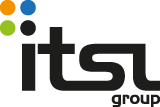The industry has grown dramatically over the past decade or so. Technology has reduced hiring cycles and connected more people than ever before. Is your business taking full advantage of this and getting ahead of the competition?
In this short article, I will outline how three different communication technologies that are helping recruitment companies. These are indeed managing their internal and external communications, streamlining their business and ultimately giving them the competitive edge in the market place.
Technology today
The advent and growth of the internet have connected more of us than ever before. LinkedIn and Twitter remain great examples of this. Each has its own set of benefits for today’s recruiter – especially LinkedIn. Voice over IP can link office phones and mobiles so audio calls are never missed and Bluetooth hands-free devices and headsets allow us to multi-task.
However, I want to focus on the third area of communication technology, which is often overlooked by recruitment companies and recruiters. Video conferencing.
Video conferencing is an essential weapon in the recruitment arsenal
Effective recruitment now and in the future will involve the use of both audio calls and social networks. However, the use of video conferencing is also an essential weapon in the modern-day recruitment arsenal. Video interviews, C.Vs and briefings enable speedy and high volume recruitment with personal interactions between candidates and clients. Video can capture what words can’t always express. As someone, somewhere once said, ‘a picture is worth a thousand words’. Well by that logic, a video should be worth much more.
Screening Process
Video interviews not only save time and funds but can also make for an effective screening process when compared with traditional phone interviews. It helps the candidate capture a better understanding of the companies’ culture and people, and allows for the employers to better understand the candidate’s personality and mannerisms. Video interviews can also be recorded for playback and examination at a later date.
By putting ‘the screen’ back into the screening process, you add an important human element to a large scale recruitment program. Increasing your productivity without creating additional expense. Phone interviews can take up to 30 minutes on average whereas it may take just a matter of minutes on the video to understand if a person is right for the role. Often saving companies of thousands in travel expenses and bad recruitment practices.
Connecting with а faraway talent
For global human resourcing, it begins to make sense. Increasing employers are looking for talent further afield and video conferencing gives the recruiter the perfect tool to do just that. Internet connectivity is at an all-time high and will continue to grow so connecting with faraway candidates will only become easier.
Candidates should make sure that they have the correct technology to accompany them and that they are ready – just as they would be for an in-person interview. With few key differences. Although most of the time video calls will connect without issues, there can be many unforeseen pitfalls. Hardware, firewalls and network problems can all hamper the smooth running of a video call.
Unforeseen video pitfalls
- Headphones
- Having a set of headphones is highly advisable. It will make your audio clearer, reduce background noise and give you that well-needed privacy.
- Software
- Downloading and using the correct software is also essential. However, now there is a new technology standard beginning to emerge known as WebRTC. This allows for video calls inside the browser. Creating a one-click link for a candidate or client to call you can help solidify a seamless experience and increase productivity. Allowing them to focus on the meeting and not the technology.
- Lighting
- Lighting is important. Check yourself out in the local view before you connect to ensure you are in the shot and they see only what you want them to.
- Room acoustics
- Acoustics also need to be bear in mind – if you are using a loud-speaker in a large space your audio quality could suffer.
- The test call
- The best way to rule out these teething problems is to do a test call before your interview with a friend or colleague so when the time comes, you are ready to impress.
Setting yourself apart from the competition
Created a video CV instantly sets you apart from the competition. It gives the employer a deeper understanding of the candidate and can sometimes even remove the need for an in-person interview all together– speeding up the recruitment process. Ask your candidate to do a piece about themselves on the camera and record it. You can give them questions to answer or prompt them to talk about themselves and different areas of their career. Sending this video alongside a traditional paper CV to an employer will surely increase your chances.
Ready for change?
Video conferencing can not only be used in the hiring process, but it can also speed up internal communications and supercharge teamwork within any business. Make sure you avoid the common pitfalls I mentioned above so to get the most out of your professional video conferencing setup. Put simply, recruitment companies need to start looking at the way they do business and how video could help them race past the competition.
To find out more about how video could benefit your recruitment business and to get more tips from the experts, reserve your place at our upcoming demo day event in the Gherkin London.

